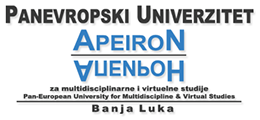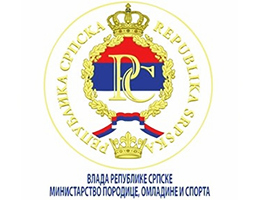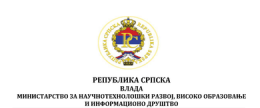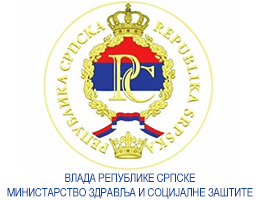COMPARATIVE ANALYSIS OF HEART RATE VARIABILITY IN SHORT-DISTANCE AND ULTRAMARATHON RUNNERS: IMPLICATIONS FOR TRAINING OPTIMIZATION
Volume 15, Issue V (2025)
Volume 15, Issue V (2025)
COMPARATIVE ANALYSIS OF HEART RATE VARIABILITY IN SHORT-DISTANCE AND ULTRAMARATHON RUNNERS: IMPLICATIONS FOR TRAINING OPTIMIZATION
Abstract:
This study investigated heart rate variability (HRV) as a biomarker for assessing athletes’ functional states and adaptation mechanisms to different training modalities. The objective was to develop a technology for monitoring and controlling the training process of runners using HRV indicators. Thirty participants were divided into two groups: Group 1 consisted of short-distance runners, and Group 2 included long-distance runners. HRV was assessed via electrocardi- ography using the “Variсard” system, while additional data were gathered through a Google Forms survey. Statistical analysis was conducted using SPSS software (version 13.0).
Results revealed minimal differences in heart rate between the two groups, with the resting heart rate being lower in long- distance runners. The low-frequency component (%LF) exhibited a more pronounced response to the orthostatic test in short-distance runners (p<0.05). Regression analysis demonstrated that factors such as age, alcohol consumption, and smoking led to an increase in LF% and a decrease in parasympathetic activity.
HRV effectively reflects the adaptive capacity of runners and can be employed to monitor and control training processes. Non-training factors, including nutrition, health status, perceived load tolerance, age, and gender, also influence HRV and must be considered when preparing runners. These findings highlight the critical role of HRV in optimizing athletic perfor- mance and tailoring individualized training strategies for short- and long-distance runners.
Keywords:
heart rate variability, athletes, short-distance runners, long-distance runners, adaptation to physical exer- cise.
Full Text:
References:
Aubert, A. E., Seps, B., & Beckers, F. (2003). Heart rate variability in athletes. Sports Medicine (Auckland, N.Z.), 33(12), 889–919. https://doi. org/10.2165/00007256-200333120-00003
Augustine, D. X., & Howard, L. (2018). Left Ventricular Hypertrophy in Athletes: Differentiating Physiology From Pathology. Current Treatment Options in Cardiovascular Medicine, 20(12), 96. https://doi.org/10.1007/s11936-018-0691-2
Bekker, S., Bolling, C., Ahmed, O., Badenhorst, M., Carmichael, J., Fagher, K., Hägglund, M., Jacobsson, J., John, J. M., Litzy, K. H., Mann, R. D., McKay, C., Mumford, S., Tabben, M., Thiel, A., Timpka, T., Thurston, J., Truong, L. K., Spörri, J., & van Nassau, F. (2020). Athlete health protection: Why qualitative research matters. Journal of Science and Medicine in Sport, 23(10), 898–901. https://doi.org/10.1016/j. jsams.2020.06.020
Boullosa, D., Esteve-Lanao, J., Casado, A., Peyré-Tartaruga, L. A., Gomes da Rosa, R., & Del Coso, J. (2020). Factors Affecting Training and Physical Performance in Recreational Endurance Runners. Sports (Basel, Switzerland), 8(3), 35. https://doi.org/10.3390/sports8030035
Brooks, J. H., Fuller, C. W., Kemp, S. P., & Reddin, D. B. (2005). Epidemiology of injuries in English professional rugby union: Part 1 match injuries. British Journal of Sports Medicine, 39(10), 757–766. https://doi.org/10.1136/bjsm.2005.018135
Carrasco-Poyatos, M., González-Quílez, A., Altini, M., & Granero-Gallegos, A. (2022). Heart rate variability-guided training in professional run- ners: Effects on performance and vagal modulation. Physiology & Behavior, 244, 113654. https://doi.org/10.1016/j.physbeh.2021.113654 Cochrane, D. (2004). Alternating hot and cold water immersion for athlete recovery: A review. Physical Therapy in Sport, 5(1), 26–32. https://doi.
org/10.1016/j.ptsp.2003.10.002
Cornforth, D., Campbell, P., Nesbitt, K., Robinson, D., & Jelinek, H. F. (2015). Prediction of game performance in Australian football using heart rate variability measures. International Journal of Signal and Imaging Systems Engineering, 8(1–2), 80–88. https://doi.org/10.1504/IJ- SISE.2015.067072Dakuko, A. N., Krivtsova, L. A., Nalobina, A. N., et al. (2020). [The influence of connective tissue dysplasia on adaptive-functional capabilities in children engaged in complex coordination sports]. Терапия, 6(6[40]), 64–70. [In Russian] https://doi.org/10.18565/therapy.2020.6.64-70 Durandt, J. J., Toit, S. N., Borresen, J., Hew-Butler, T., Masimla, H., Jakoet, I., & Lambert, M. (2006). Fitness and body composition profiling of elite junior South African rugby players. South African Journal of Sports Medicine, 18, 38–45. https://doi.org/10.17159/2078-516X/2006/
v18i2a242
Ferreira, M., & Zanesco, A. (2016). Heart rate variability as an important approach for assessing autonomic modulation. Motriz: Revista de Edu- cação Física, 22(3), 3–8. https://doi.org/10.1590/S1980-65742016000200001
Food and Drug Administration. (1995). Information sheets for institutional review boards and clinical investigators. Retrieved September 5, 2022, from https://www.fda.gov
Gronwald, T., Rogers, B., Hottenrott, L., Hoos, O., & Hottenrott, K. (2021). Correlation properties of heart rate variability during a marathon race in recreational runners: Potential biomarker of complex regulation during endurance exercise. Journal of Sports Science & Medicine, 20(4), 557–563. https://doi.org/10.52082/jssm.2021.557
Hynynen, E., Uusitalo, A., Konttinen, N., & Rusko, H. (2006). Heart rate variability during night sleep and after awakening in overtrained athletes.
Medicine and Science in Sports and Exercise, 38(2), 313–317. https://doi.org/10.1249/01.mss.0000184631.27641.b5
Kalsina, V. V., & Nalobina, A. N. (2018). [Features of heart rate regulation in tennis players with musculoskeletal disorders under competitive stress]. Спортивная медицина: наука и практика, 8(3), 34–41. [In Russian] https://doi.org/10.17238/ISSN2223-2524.2018.3.34
Kenneally, M., Casado, A., & Santos-Concejero, J. (2018). The Effect of Periodization and Training Intensity Distribution on Middle- and Long- Distance Running Performance: A Systematic Review. International Journal of Sports Physiology and Performance, 13(9), 1114–1121. https://doi.org/10.1123/ijspp.2017-0327
Kiss, O., Sydó, N., Vargha, P., Édes, E., Merkely, G., Sydó, T., & Merkely, B. (2015). Prevalence of physiological and pathological electrocardio- graphic findings in Hungarian athletes. Acta Physiologica Hungarica, 102(2), 228–237. https://doi.org/10.1556/036.102.2015.2.13
Kölling, S., Duffield, R., Erlacher, D., Venter, R., & Halson, S. L. (2019). Sleep-Related Issues for Recovery and Performance in Athletes. Inter- national Journal of Sports Physiology and Performance, 14(2), 144–148. https://doi.org/10.1123/ijspp.2017-0746
Korobeynikov, G., Korobeynikova, L., Potop, V., Nikonorov, D., Semenenko, V., Dakal, N., & Mischuk, D. (2018). Heart Rate Variability System in Elite Athletes with Different Levels of Stress Resistance. Journal of Physical Education and Sport, 18, 550. https://doi.org/10.7752/ jpes.2018.02079
Lukaski, H. C. (2004). Vitamin and mineral status: Effects on physical performance. Nutrition (Burbank, Los Angeles County, Calif.), 20(7–8), 632–644. https://doi.org/10.1016/j.nut.2004.04.001
Lundstrom, C. J., Foreman, N. A., & Biltz, G. (2023). Practices and Applications of Heart Rate Variability Monitoring in Endurance Athletes.
International Journal of Sports Medicine, 44(1), 9–19. https://doi.org/10.1055/a-1864-9726
Mal’tsev, A. Y., Mel’nikov, A. A., Vikulov, A. D., & Gromova, K. S. (2010). Central hemodynamic and heart rate variability parameters in athletes during different training programs. Human Physiology, 36(1), 96–101. https://doi.org/10.1134/S0362119710010135
Marathonec. (2023, December 6). Backyard Ultra — что это? [Backyard Ultra — What is it?]. Marathonec. https://marathonec.ru/backyard- ultra-chto-eto/
Minnis, J. M. (2015). Nutrition and athletic performance: Implications of heart rate variability (Master’s thesis). Kansas State University. Re- trieved from https://doi.org/10.1249/MSS.0000000000000852
Nalobina, A. N. (2020). [Personalized technology for the use of physical recovery tools in the annual cycle of sports training for swimmers]. In Олимпийский спорт и спорт для всех: материалы XXV Международного научного конгресса (Ч. 2, с. 176–182). Минск: Белорусский государственный университет культуры и искусств. [In Russian]
Nuuttila, O. P., Kyröläinen, H., Kokkonen, V. P., & Finkenzeller, T. (2024). Morning versus nocturnal heart rate and heart rate variability responses to intensified training in recreational runners. Sports Medicine — Open, 10, 120. https://doi.org/10.1186/s40798-024-00779-5
Ovsyannikova, M. A., Bindusov, E. E., & Mironova, E. A. (2020). [Skyrunning and trail running as new forms of physical activity]. Аллея науки,
2(5[44]), 212–214. [In Russian]
Paul, M., & Garg, K. (2012). The effect of heart rate variability biofeedback on performance psychology of basketball players. Applied Psycho- physiology and Biofeedback, 37(2), 131–144. https://doi.org/10.1007/s10484-012-9185-2
Rogers, B., & Gronwald, T. (2022). Fractal correlation properties of heart rate variability as a biomarker for intensity distribution and training prescription in endurance exercise: An update. Frontiers in Physiology, 13, 879071. https://doi.org/10.3389/fphys.2022.879071
Rogers, B., Mourot, L., Doucende, G., & Gronwald, T. (2021). Fractal correlation properties of heart rate variability as a biomarker of endurance exercise fatigue in ultramarathon runners. Physiological Reports, 9(14), e14956. https://doi.org/10.14814/phy2.14956
Sammito, S., & Böckelmann, I. (2016). Factors influencing heart rate variability. International Cardiovascular Forum Journal, 6(1). https://doi. org/10.17987/icfj.v6i0.242
Schaffarczyk, M., Rogers, B., Reer, R., & Gronwald, T. (2022). Fractal correlation properties of HRV as a noninvasive biomarker to assess the physiological status of triathletes during simulated warm-up sessions at low exercise intensity: A pilot study. BMC Sports Science, Medi- cine and Rehabilitation, 14(1), 203. https://doi.org/10.1186/s13102-022-00596-x
Strüven, A., Holzapfel, C., Stremmel, C., & Brunner, S. (2021). Obesity, Nutrition and Heart Rate Variability. International Journal of Molecular Sciences, 22(8), 4215. https://doi.org/10.3390/ijms22084215






